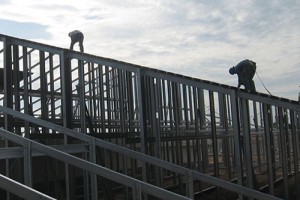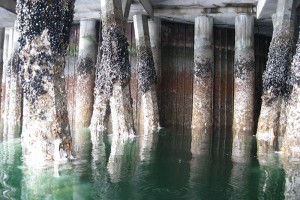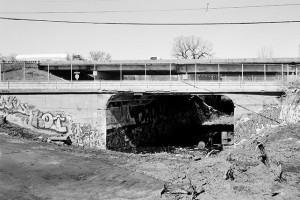On a recent chemical plant project for which the author was the Engineer of Record, an electrical contractor, contrary to contract specifications, manually arc welded electrical grounding conductors to reinforcing steel for a pipe rack foundation. The electrician explained that the National Electric Code (NEC) allows welding to concrete encased reinforcing steel, and he frequently does so in lieu of independent electrical ground rods which were specified on this project. …
Yearly Archives : 2014
Last spring, I had the opportunity to attend one of the several terrific presentations that were part of the CASE Risk Management Convocation at the 2013 Structures Congress. This session was presented by James Parker and Pedro Sifre of Simpson, Gumpertz, and Heger, and I thank them for allowing me to present a portion of it to a wider audience. …
The Global Change Institute (GCI) is an Australian organization within The University of Queensland (UQ) that researches global sustainability issues including resource security, ecosystem health, population growth and climate change (Figure 1). The design of its new $32 million (AUD) building by project architects, HASSELL and structural and façade engineers, Bligh Tanner, was to be an exemplar project benchmarked using the Green Building Council of Australia’s Green Star rating (at 6 Star Green Star level), as well achieving an Australian-first Living Building Challenge compliance. …
Each year, the American Society of Civil Engineers (ASCE) publishes a Report Card for America’s Infrastructure. Their rating system uses familiar academic grading (A through F) to report on the condition of America’s aging infrastructure. Last year, America’s infrastructure received a D+, indicating deteriorating infrastructure. Included in this report are waterfront structures, which are vitally important. According to ASCE, America has over 3,700 maratime terminals serving as commerce and transportation hubs. …
Two days of expected work turned into a week; one equipment breakdown cascaded into another; a 30-minute delay became 24 hours. A documentation project that was scheduled to happen in June did not begin until September. The challenges of keeping a bridge demolition project on schedule are not unique, but the requirement for historical documentation of a 1912 reinforced concrete bridge by historians and engineers added another layer of complexity to a highway widening project. However, this documentation effort ultimately provided interesting information about the early development of reinforced concrete flat slab design. …
2014 is shaping up to be a strong year, according to those working in the foundations sector. “We probably have more backlog going into a winter of a new year than I can remember,” says Lyle Simonton, Director of Business Development at Subsurface Constructors, Inc., St. Louis, Missouri. “We’re not seeing that winter slowdown that we’ve sometimes seen in the past. Rather than have a seasonal lull, we have a lot of work carrying on into the first months of the year.” …
This text comes with high regard, being supported by engineer practitioners, engineering firms and professional organizations. If you think of forensic engineering as simply the investigation and study of building structural failures, you will be surprised at the breadth of material discussed. I use the term text rather than book because, in 140 pages, the reader will be exposed to far more than the process for the investigation of failures. This publication is heavily weighted with information of interest to engineers providing expert testimony. It is apparent early into the read that few, if any, universities offer a course in such depth. …
A Crash Course in Engineering and Architecture
By Edward Denison and Ian Stewart
I must preface my review of How To Read Bridges by confessing that I am a Bridge Engineer who “reads” bridges every day. I was intrigued when afforded the opportunity to review this book, which summarizes the introductory aspects of bridge engineering… and is written for readers with various types of backgrounds. …
A Guide to Building Information Modeling
For Owners, Managers, Designers, Engineers, and Contractors
By Chuck Eastman, Paul Teicholtz, Rafael Sacks, and Kathleen Liston
By Barry B. LePatner; with special comments by Hon. James L. Oberstar, Chairman, U.S. House Committee on Transportation and Infrastructure; forward by Robert Puentes, Sr Fellow, Metropolitan Policy Program, Brookings Institution
Foster Publishing, New York, in association with University Press of New England to be published Nov 2010 …






